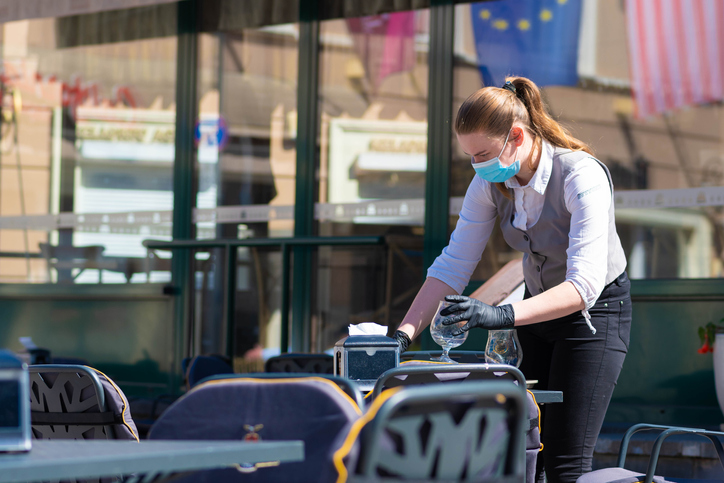As areas across the country cautiously reopen their economies, restaurants are among those being asked to take extra precautions.
From state to state and municipal area to municipal area, the rules and guidelines vary, as does enforcement. For restaurant owners, this creates a large amount of uncertainty that adds to the strain of the situation.
Gross mistakes or negligence in protecting the safety of restaurant patrons and employees can lead to fines, lawsuits, and reputational damage. More importantly, most restaurant owners want to know that their employees and patrons will be able to enjoy their venue safely.
We urge every restaurant owner to follow CDC, FDA, and EPA guidelines carefully, to coordinate with local and state officials, and to watch for updates as conditions change. Additionally, the National Restaurant Association has published guidelines in cooperation with the Food and Drug Administration that can be used to establish a framework for safe reopening.
Here are the key points from that publication.
1. Update Cleaning and Sanitation Practices
Thoroughly detail-clean and sanitize your entire facility prior to reopening, including seldom-touched surfaces, using EPA and FDA approved cleaning methods and chemicals. Do not use disinfectants on food contact surfaces.
Between seatings, clean and sanitize tables, condiments, seating, and any other surfaces and items. Discard single-use items and remove unused utensils for cleaning and sanitizing.
Remove lemons and unwrapped straws from self-serve areas. Consider eliminating self-serve areas altogether.
Clean and sanitize reusable menus between each use. Discard paper menus after each use.
Clean and sanitize restrooms frequently.
Make hand sanitizer readily available to guests.
Clean and sanitize the entire restaurant daily.
2. Monitor Employee Health and Hygiene
Make it easy and required for employees to stay home when they or anyone in their household is sick. Consider updating sick policies to eliminate loss of income or fear of job security as reasons to come to work sick. Notify and frequently remind employees that the sick policy applies if they themselves have symptoms or if anyone in their household does.
When employees become sick while at work, remove them as quickly as possible and sanitize all areas where they have worked. Tell all sick employees to self-isolate for seven days from the onset of symptoms and for three days after symptoms stop. Notify local health authorities if any employee is diagnosed with COVID 19.
Consider requiring the wearing of face masks, especially in situations where distancing is difficult. Encourage and enforce distancing where possible.
Train employees on the importance of hand-washing and make hand-washing stations readily available. Make sure employees have plenty of time to wash their hands between tasks and throughout their shifts.
3. Establish Social Distancing
Update floor plans to meet the social distancing requirements of your municipality, which should include at least six feet of distance between tables. Limit party size, and respect any social distancing measurements based on square footage.
Enforce social distancing with employees as well as delivery drivers and other vendors.
Post signage that no one with a fever or other symptoms may enter the restaurant.
Limit contact between staff and patrons. Install physical barriers such as partitions and sneeze guards where possible and practical. Reduce person-to-person contact using technology such as apps and mobile ordering.
Provide hand sanitizer for guests, and establish social distancing in areas where guests might usually congregate, such as waiting areas and bars. Use floor markings, outdoor waiting areas, reservations, and ingress/egress paths to control and reduce crowding.
Stagger work stations. Limit the number of employees in break rooms. Consider using digital communication boards to convey pre-shift meetings and other communications that might otherwise encourage congregating in small spaces.
Every restaurant is different, and every owner is encouraged to use their best judgment in association with guidelines from these agencies and organizations to develop safe reopening frameworks that help them keep their workers and patrons safe.
We would love to discuss your unique concerns. Our staff of Certified Industrial Hygienists, Certified Safety Professionals, and Environmental Consultants can provide science-based information.



